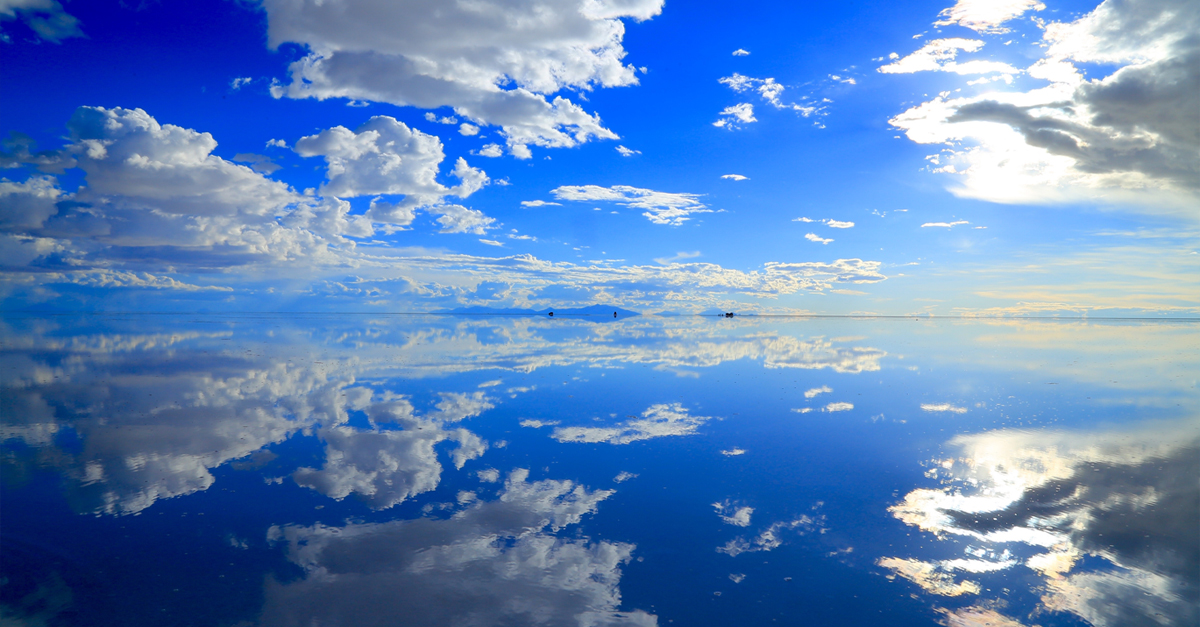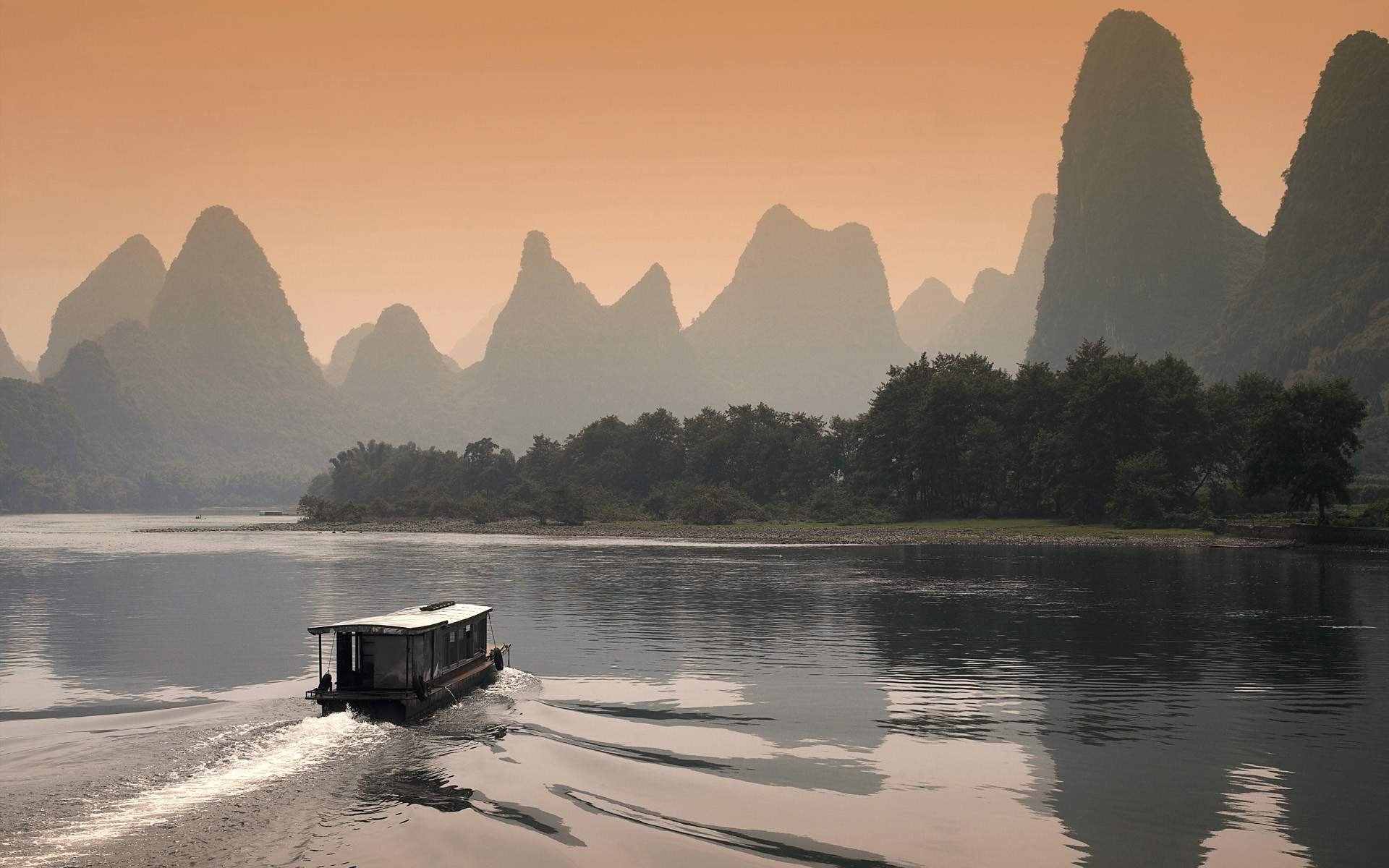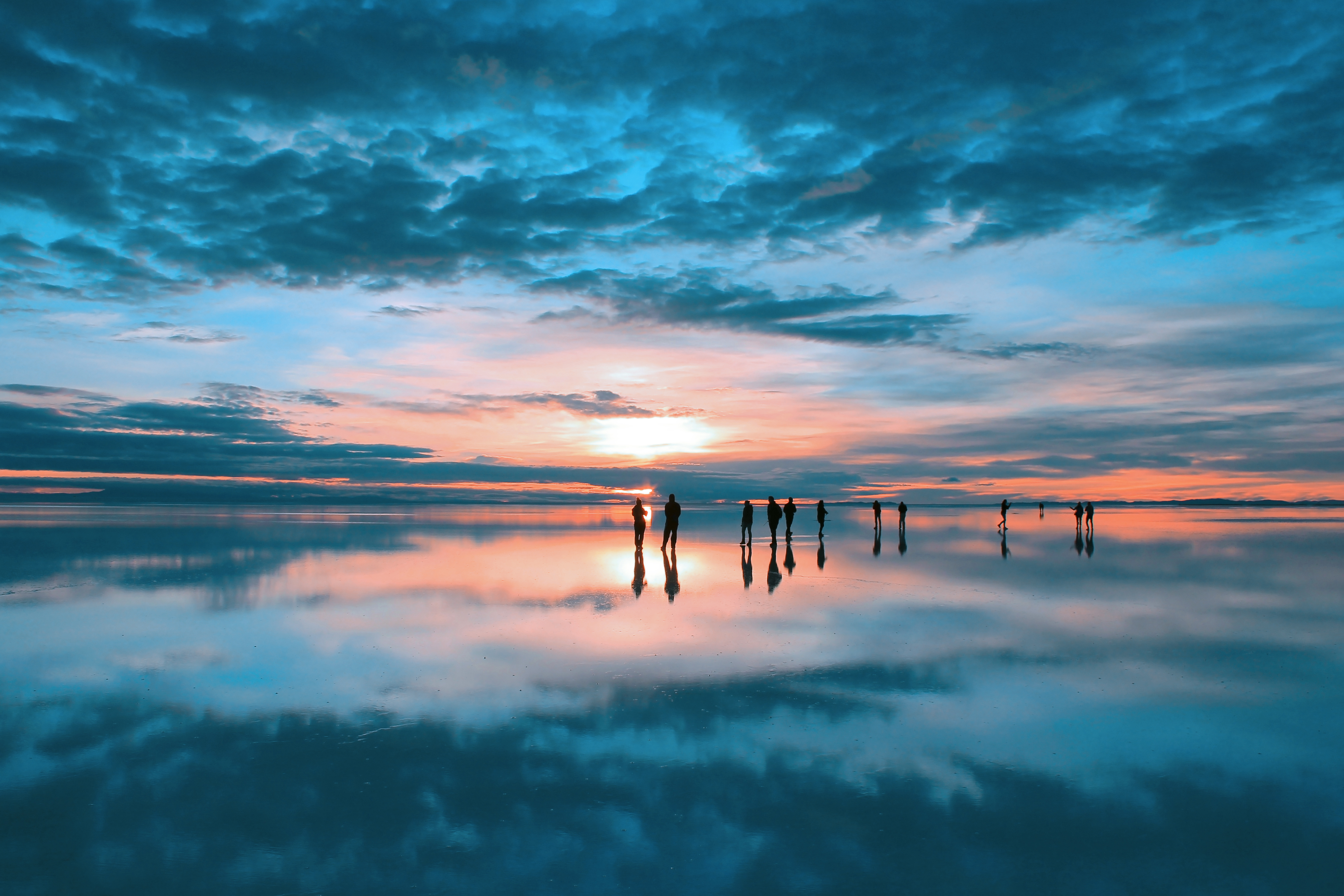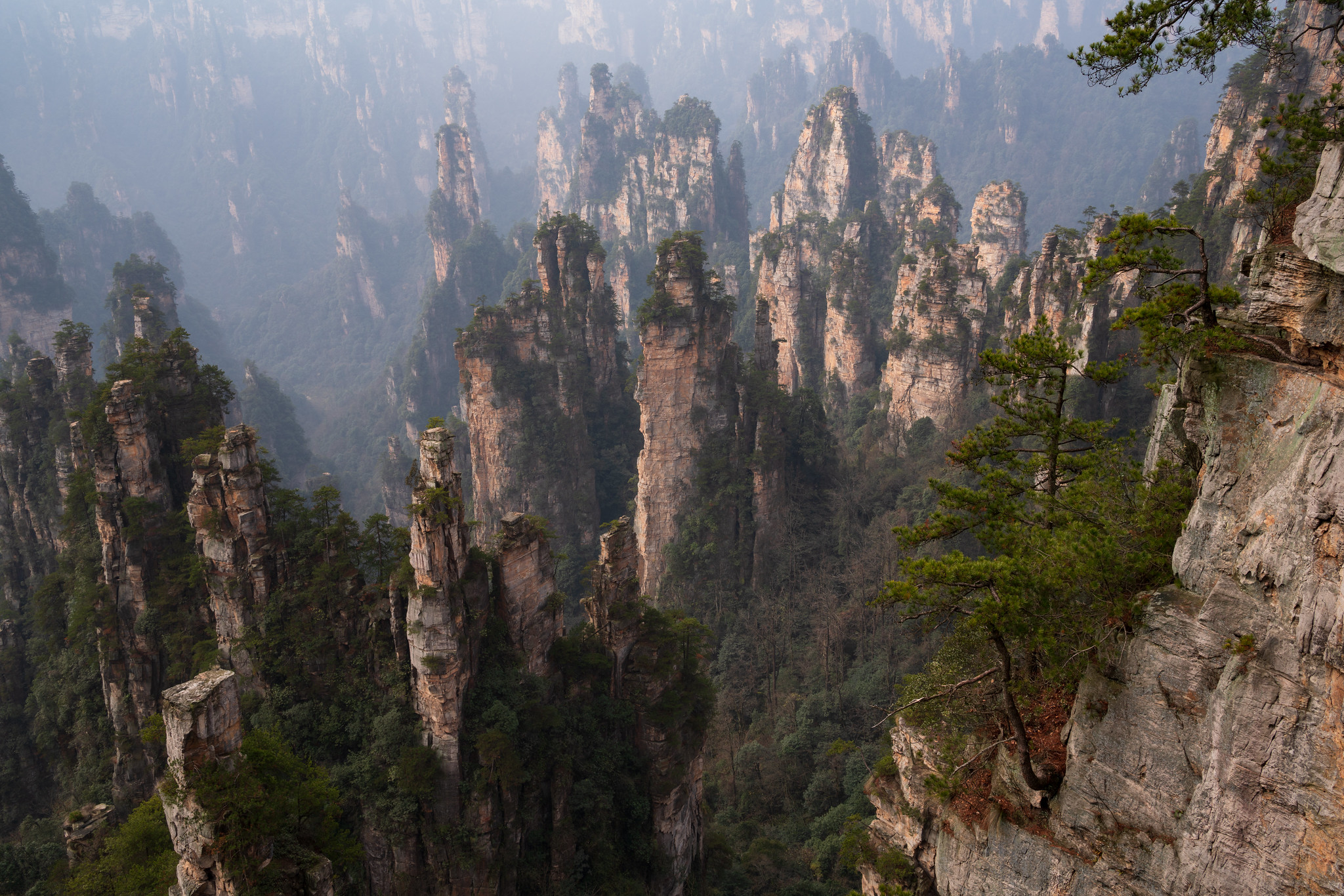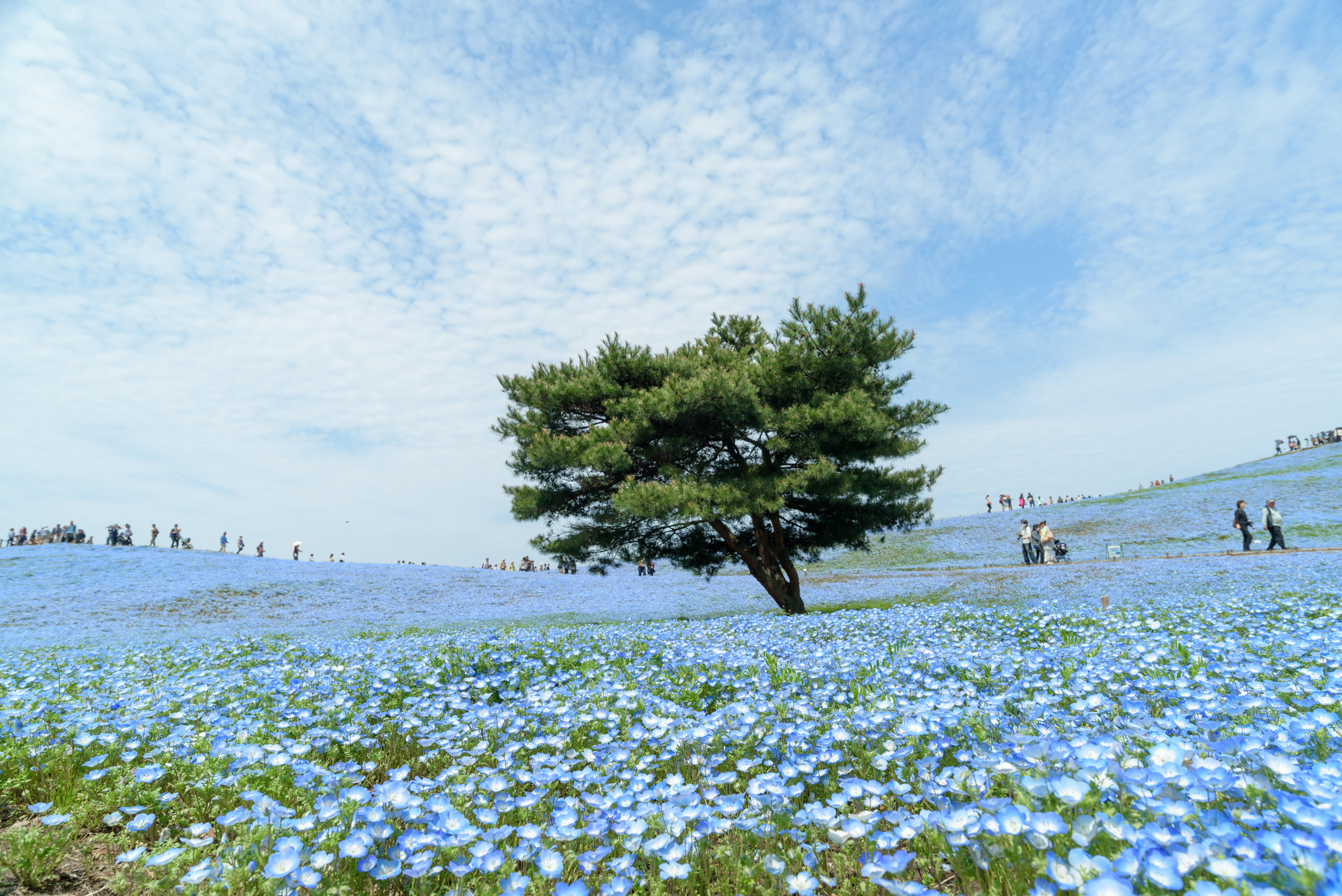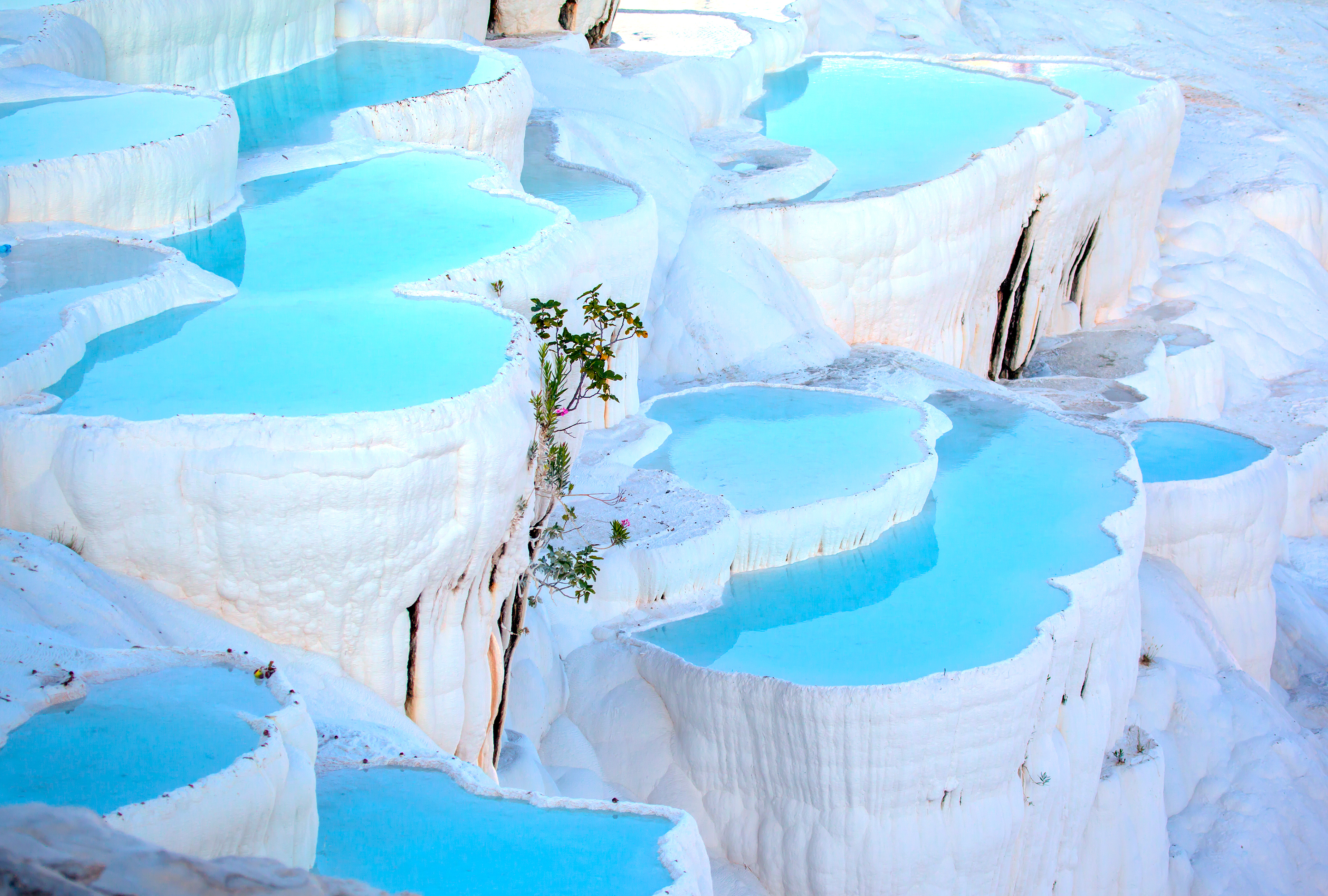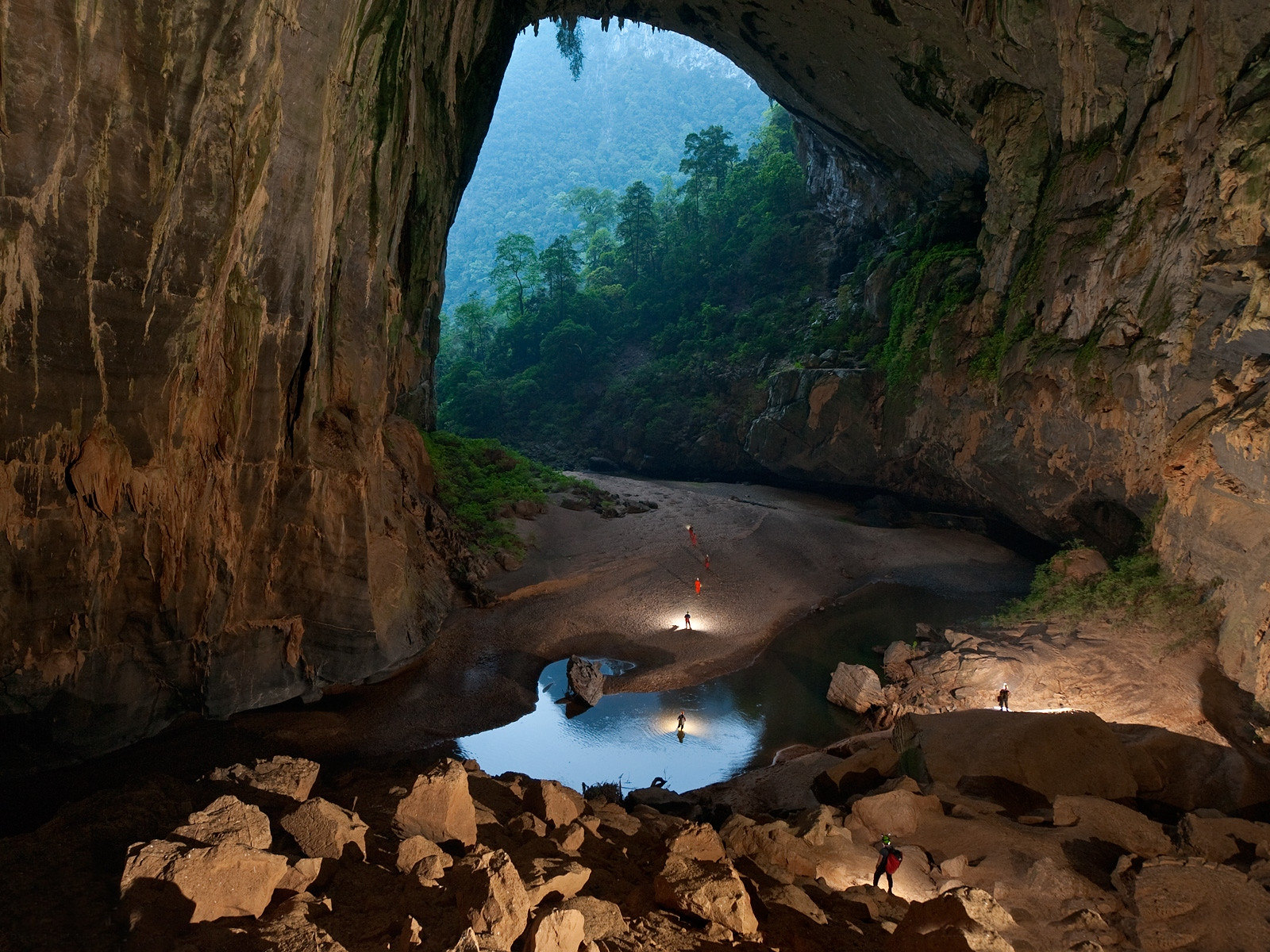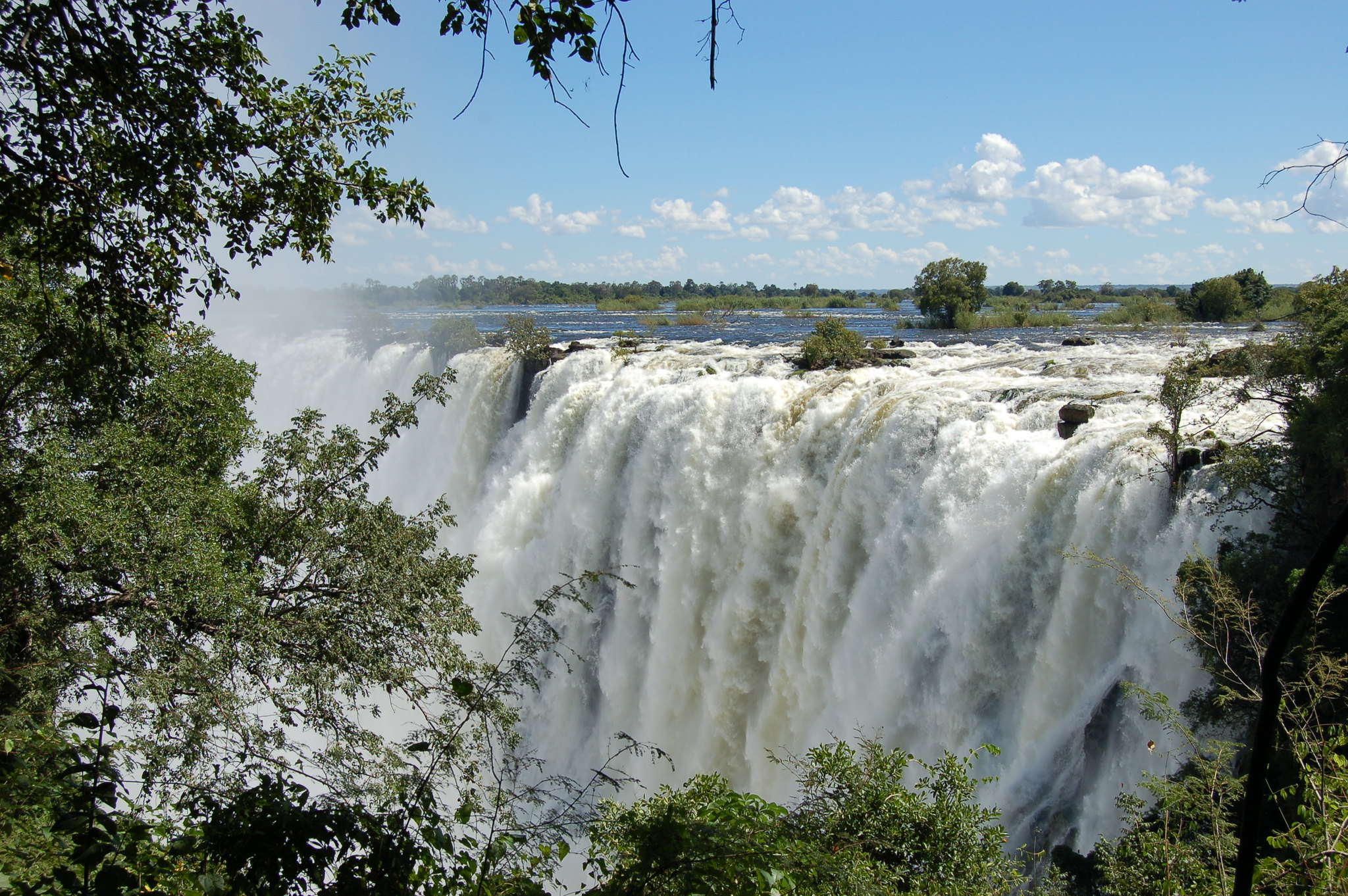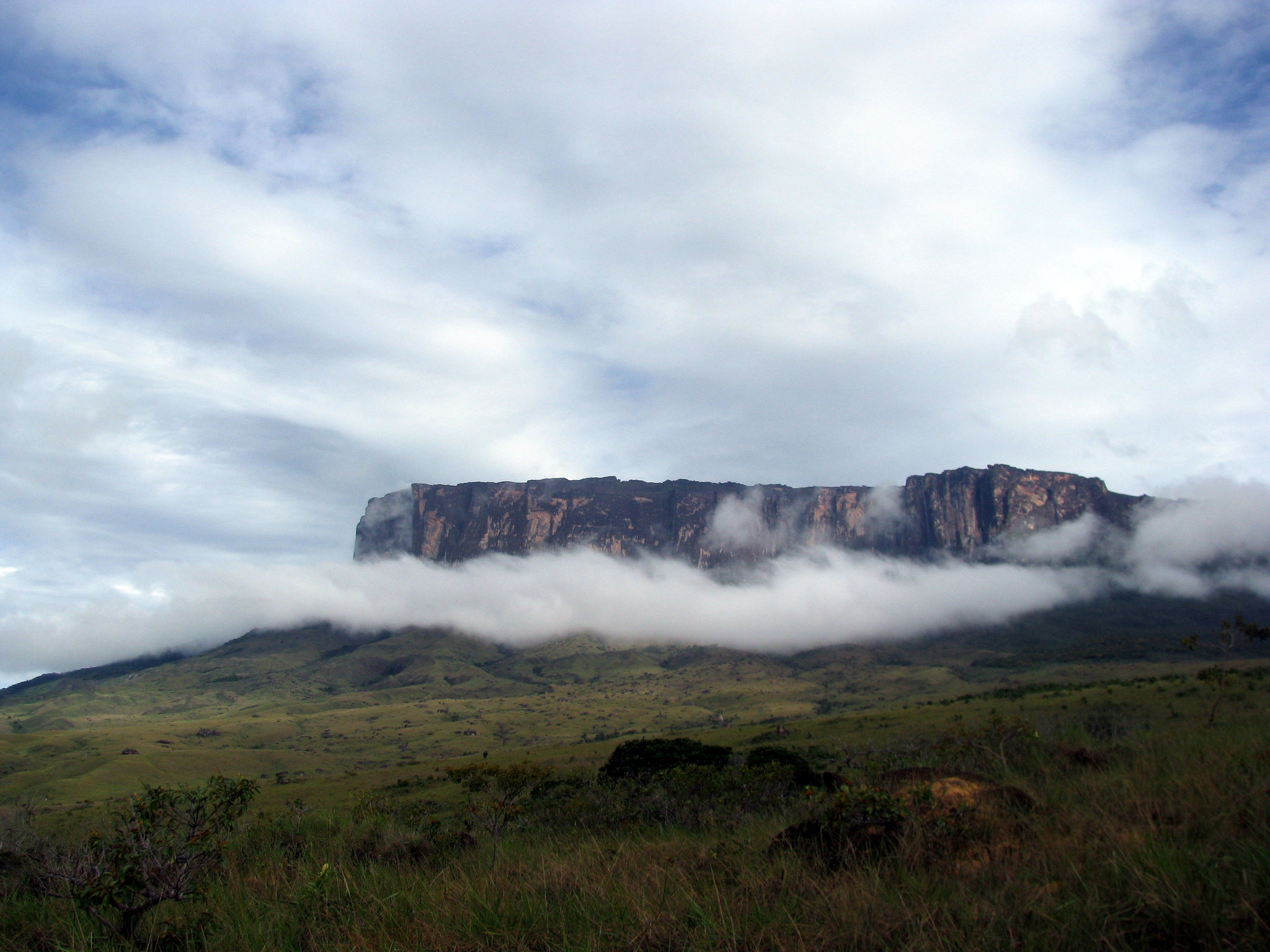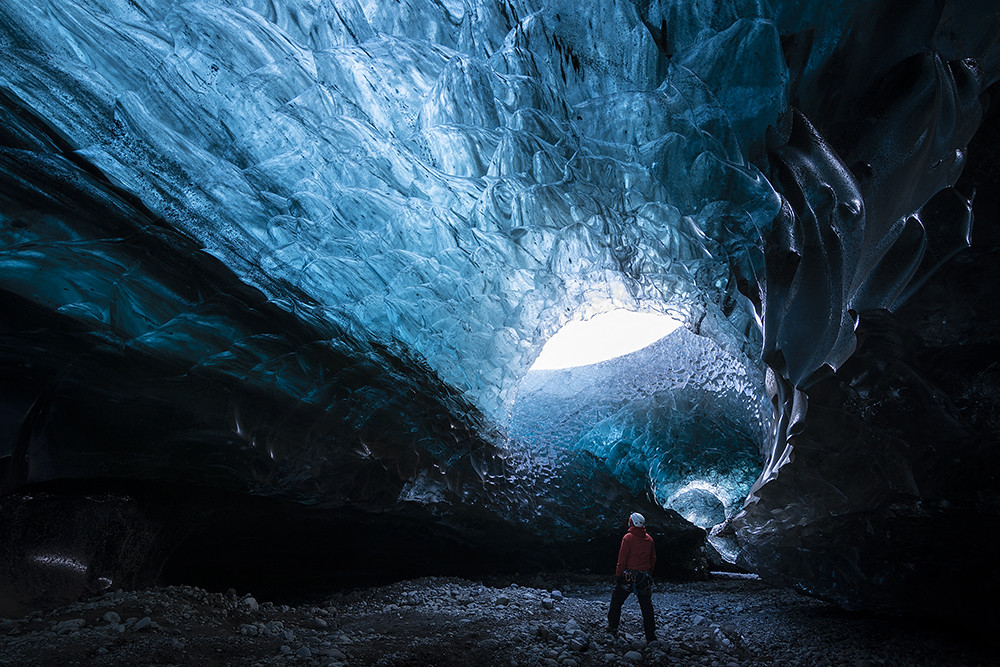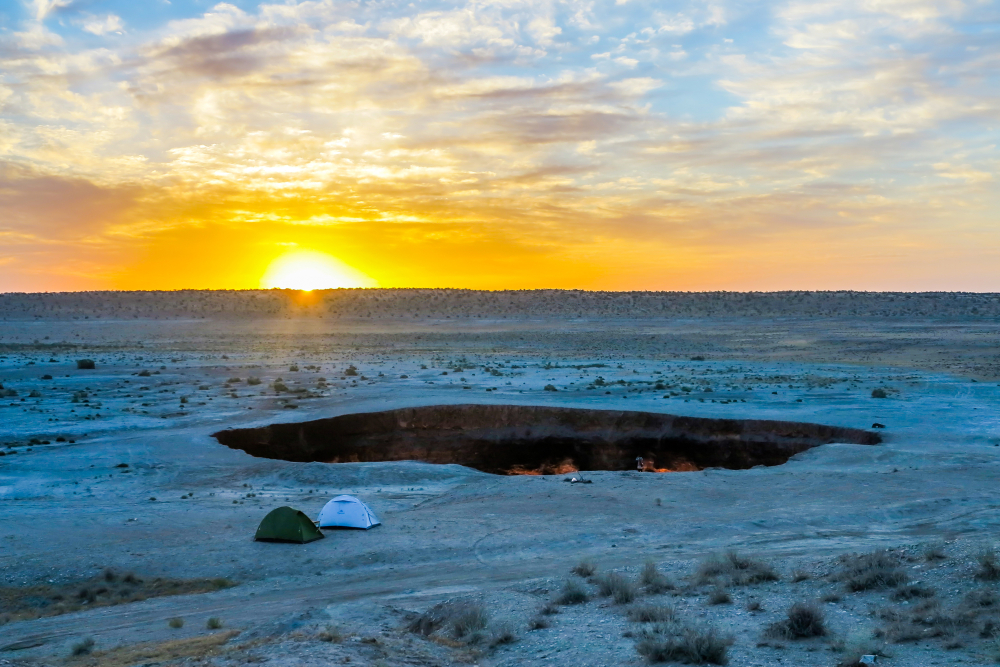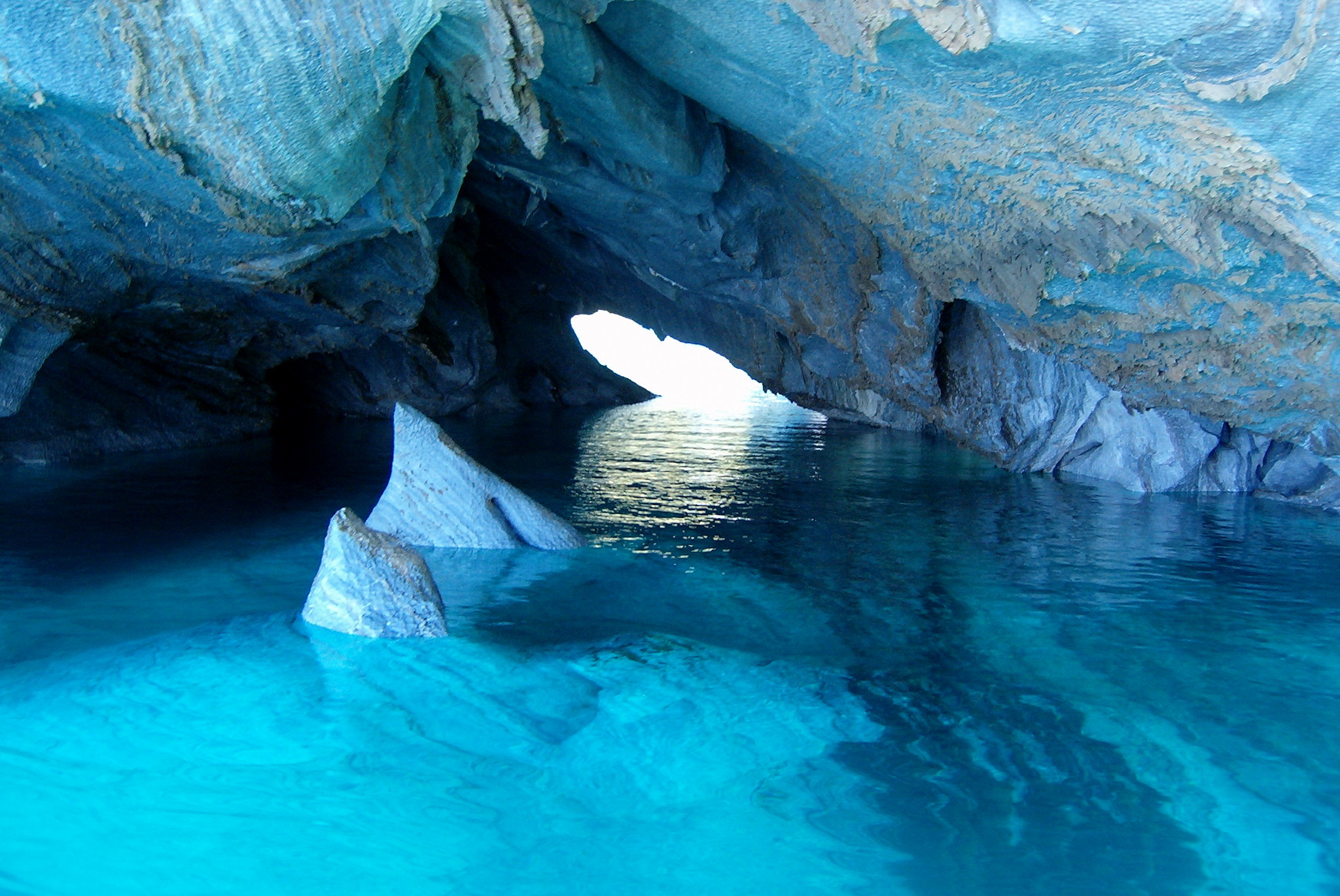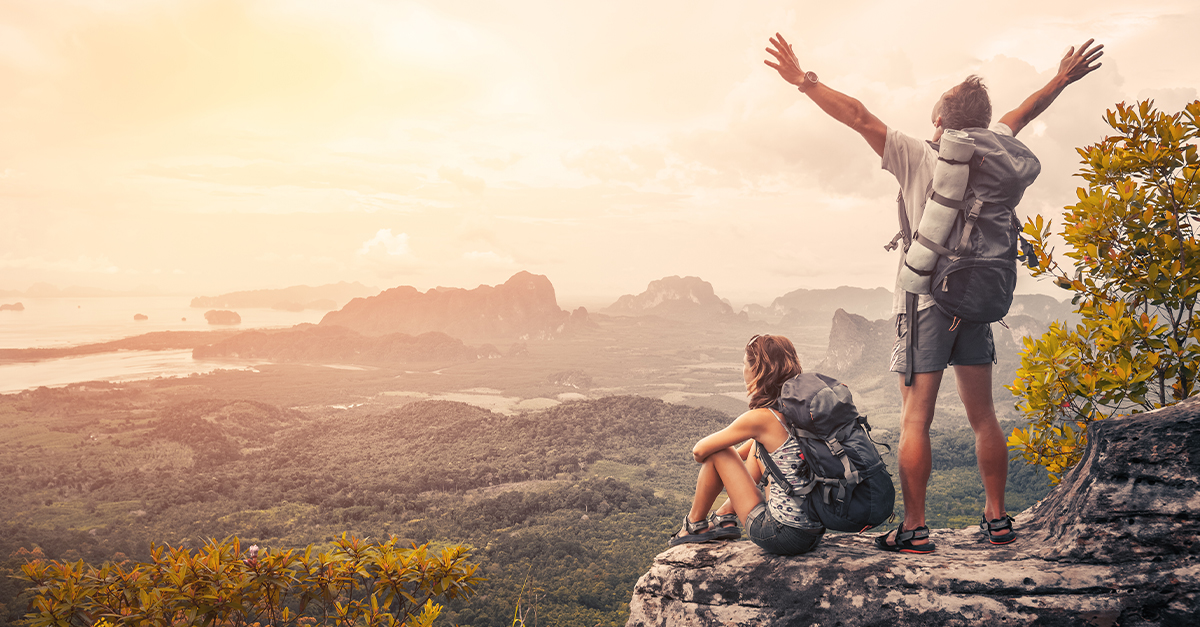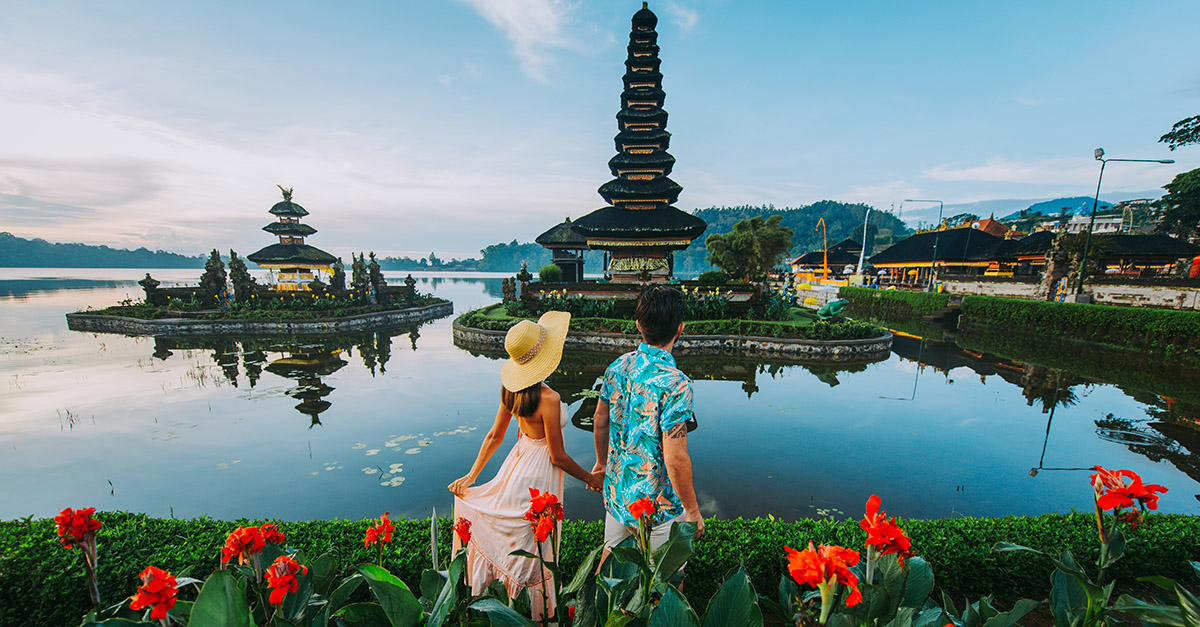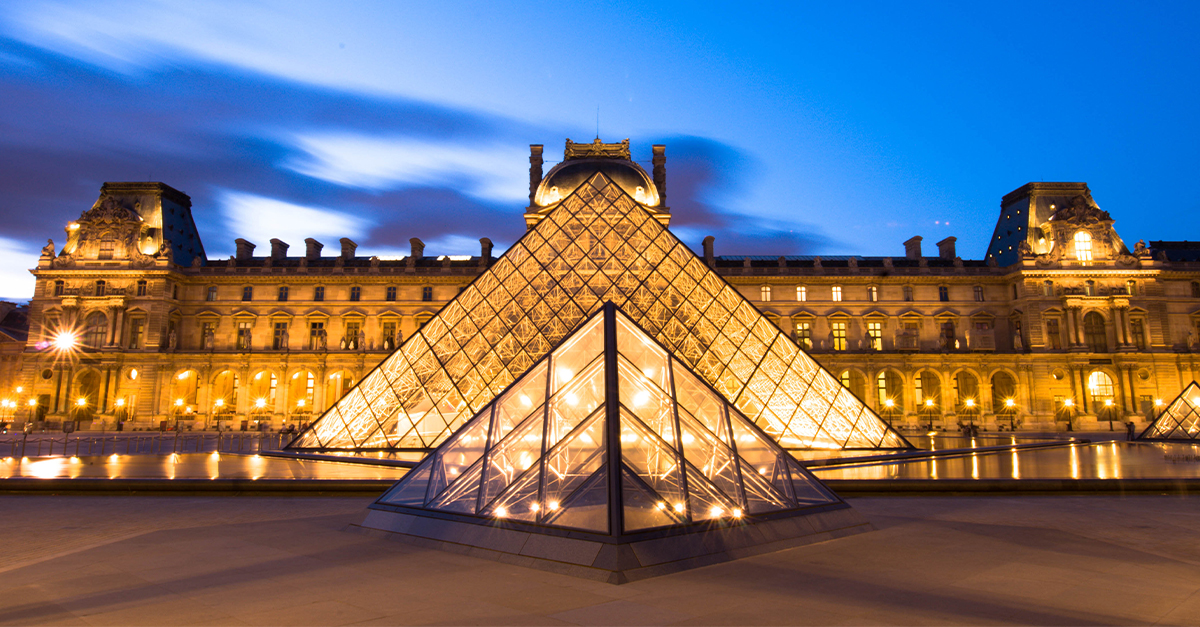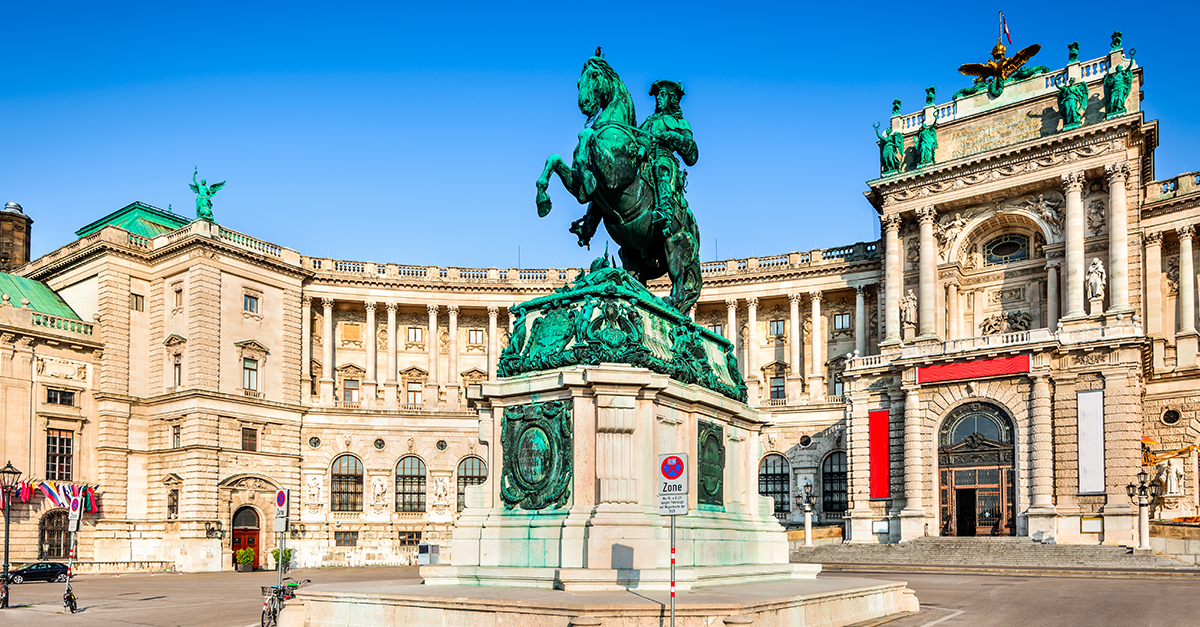Far Out, Man
Take as many pictures as you want—people still won't believe that these psychedelic travel destinations are real.

Zhangye Danxia Landform
The same tectonic plate that's pushing the Himalayas up into the sky has...tilted the layers of sandstone that have built up over millions of years in China's Zhangye National Geopark, leaving multicolored stripes cutting across the landscape that have to be seen to be believed.
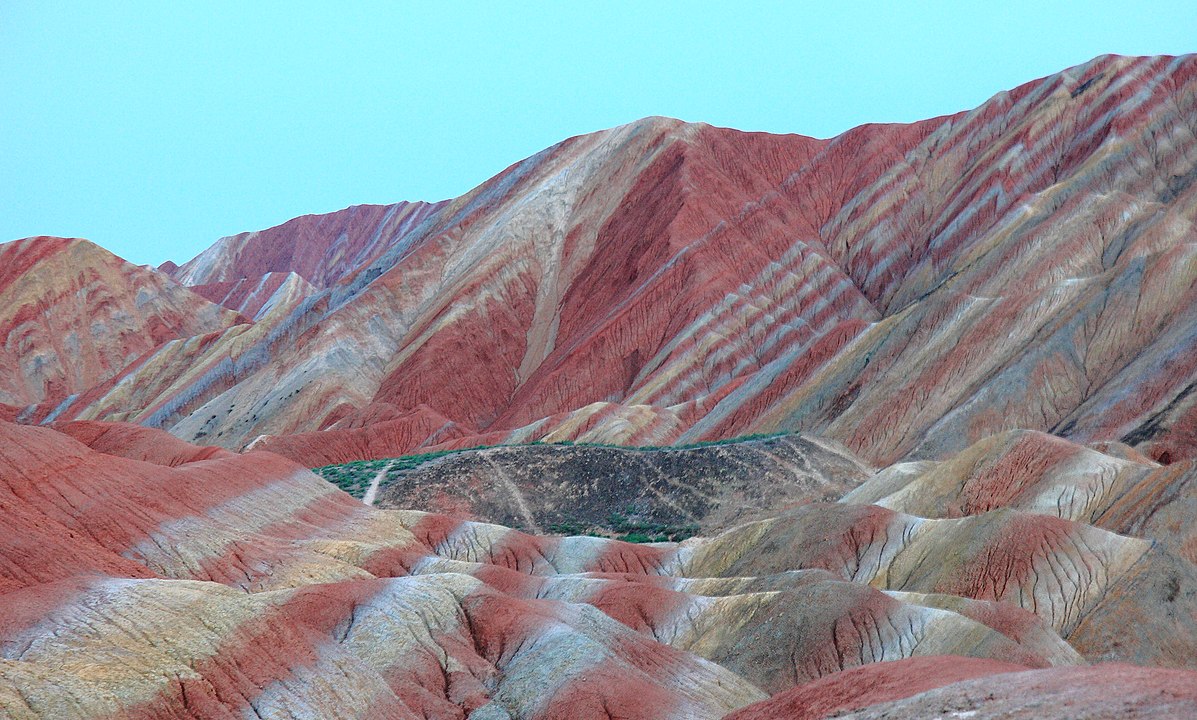 Han Lei, CC BY-SA 3.0, Wikimedia Commons
Han Lei, CC BY-SA 3.0, Wikimedia Commons
Li River, China
The tree-covered limestone mountains that erupt into the air along either side of China's Li River seem impossibly steep. Venture into the river's Reed Flute Cave for an even more otherworldly experience.
Meteora, Greece
The enormous rock formations at Meteora in Greece are an impressive sight to behold, but the Eastern Orthodox Monasteries dotting the monoliths—some even resting on top, floating hundreds of feet in the air—are what make the place seem like a dream.
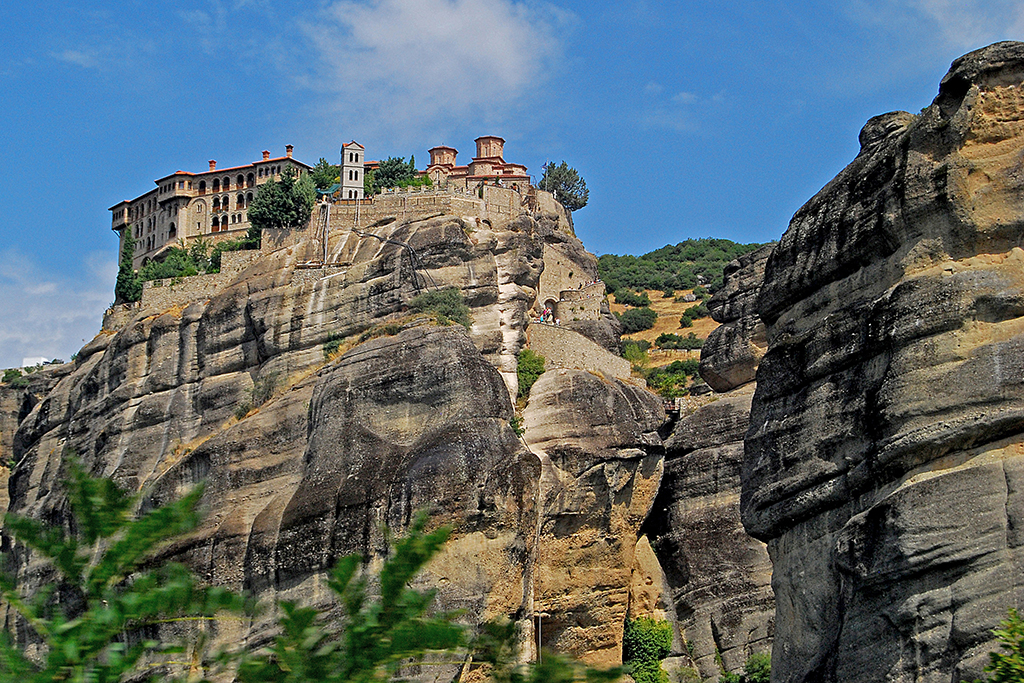 Marios Ioannides, CC BY-SA 4.0, Wikimedia Commons
Marios Ioannides, CC BY-SA 4.0, Wikimedia Commons
Salar de Uyuni, Bolivia
Stretching endlessly beneath the Bolivian sky, Salar de Uyuni is the world’s largest salt flat—and when rain lightly kisses its surface, it transforms into a giant mirror, blurring the line between earth and heaven. It's not just a place you visit—it’s a place you feel, like stepping into a dream you never want to wake from.
Tianzi Mountains, China
Water can dissolve limestone, which can carve some extremely bizarre formations—and few places on Earth show that like Tianzi Mountain in China, where the eerily skinny limestone pillars can reach over 1,000 feet tall.
Hitachi Seaside Park, Japan
A rose by any other name would usually smell as sweet—but it's hard to smell as sweet as Japan's Hitachi Seaside park, where it looks like the flowers go on forever.
Caves in Algarve, Portugal
Someone carved a gigantic hole in the top of this idyllic, beachside cave in Portugal!
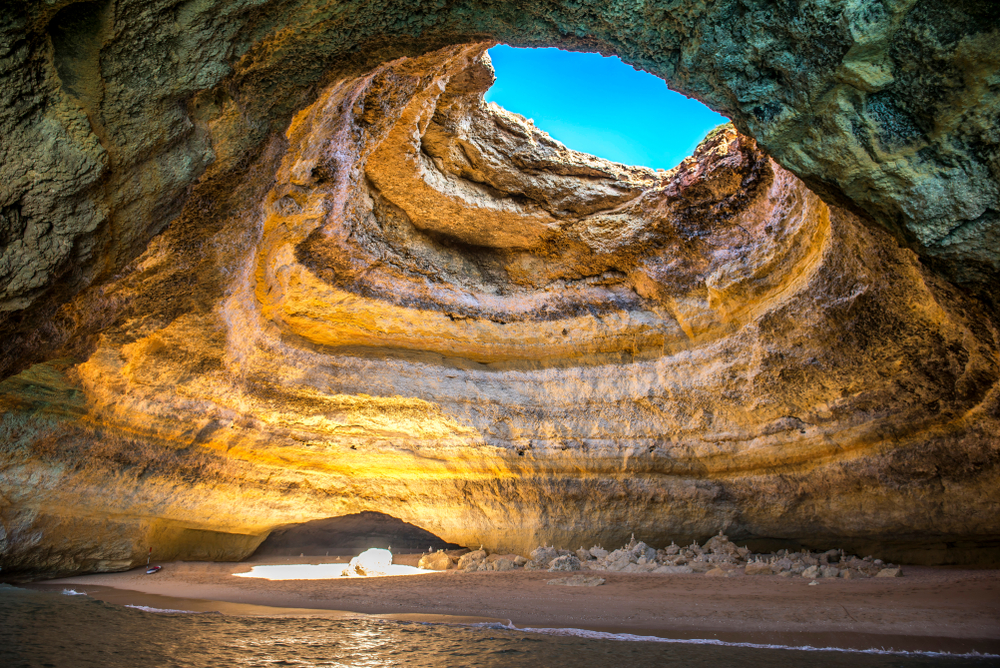 Valerija Polakovska, Shutterstock
Valerija Polakovska, Shutterstock
Pamukkale, Turkey
Pamukkale, which translates to “Cotton Castle” in Turkish, perfectly captures the enchanting beauty of this otherworldly wonder—where shimmering terraces of carbonate build up from the warm embrace of natural hot springs, creating a surreal landscape that feels straight out of a dream.
Naica Mine, Mexico
At first when you see a picture Naica Mine, you might think you're looking at an image from a microscope. Then you see the people and realize those crystals are 20 feet tall...
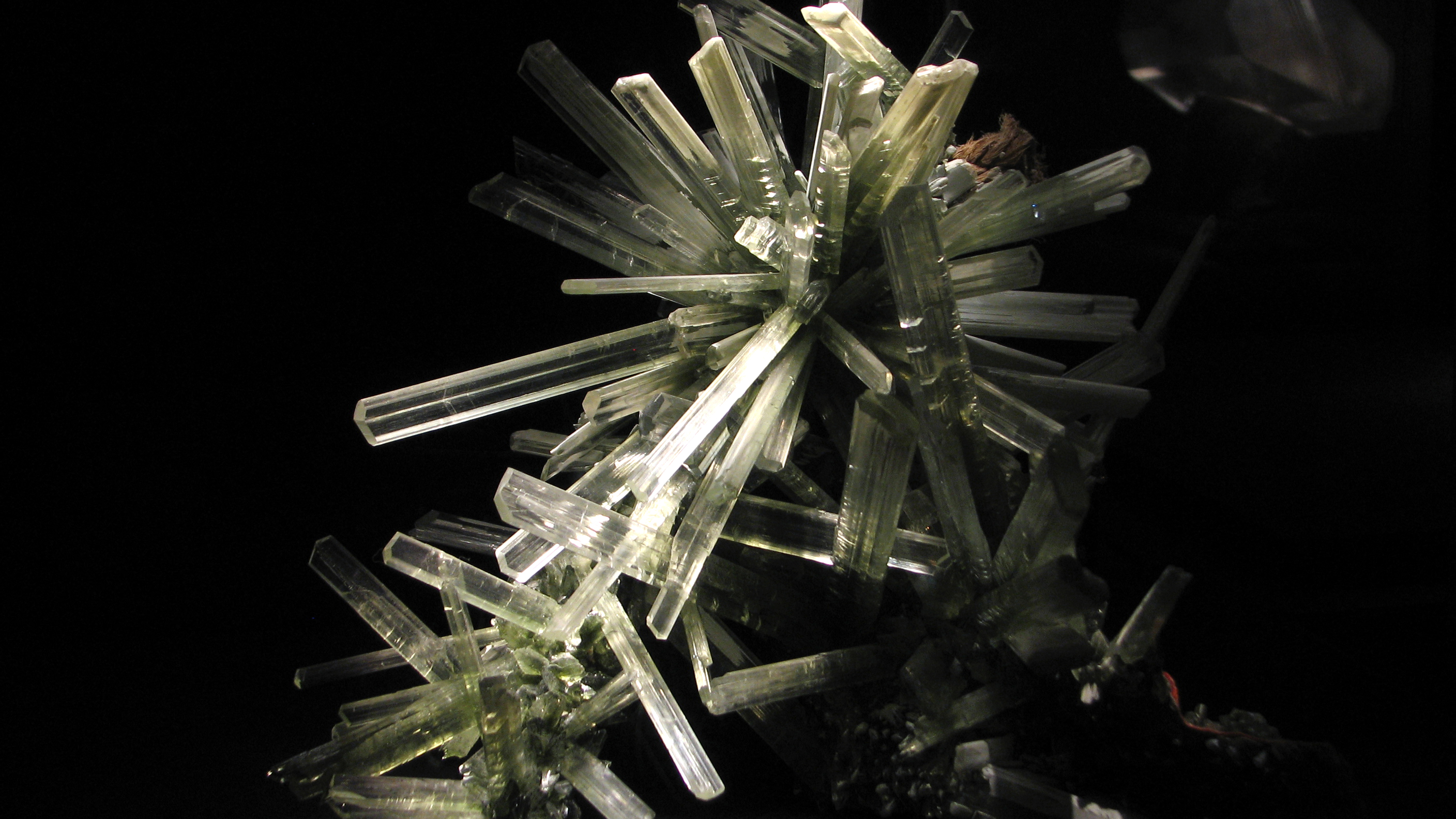 Assignment_Houston_One, CC BY-SA 2.5, Wikimedia Commons
Assignment_Houston_One, CC BY-SA 2.5, Wikimedia Commons
Hang Son Doong, Vietnam
Hang Son Doong, Vietnam is the largest natural cave on Earth. The reflecting pool is impossible to really capture in photos.
Lençóis Maranhenses, Brazil
In the dry season, the rolling dunes of Lençóis Maranhenses National Park in Brazil are impressive enough—but during the rainy season, the valleys between the dunes fill with freshwater lagoons and the whole landscape looks like an abstract paining.
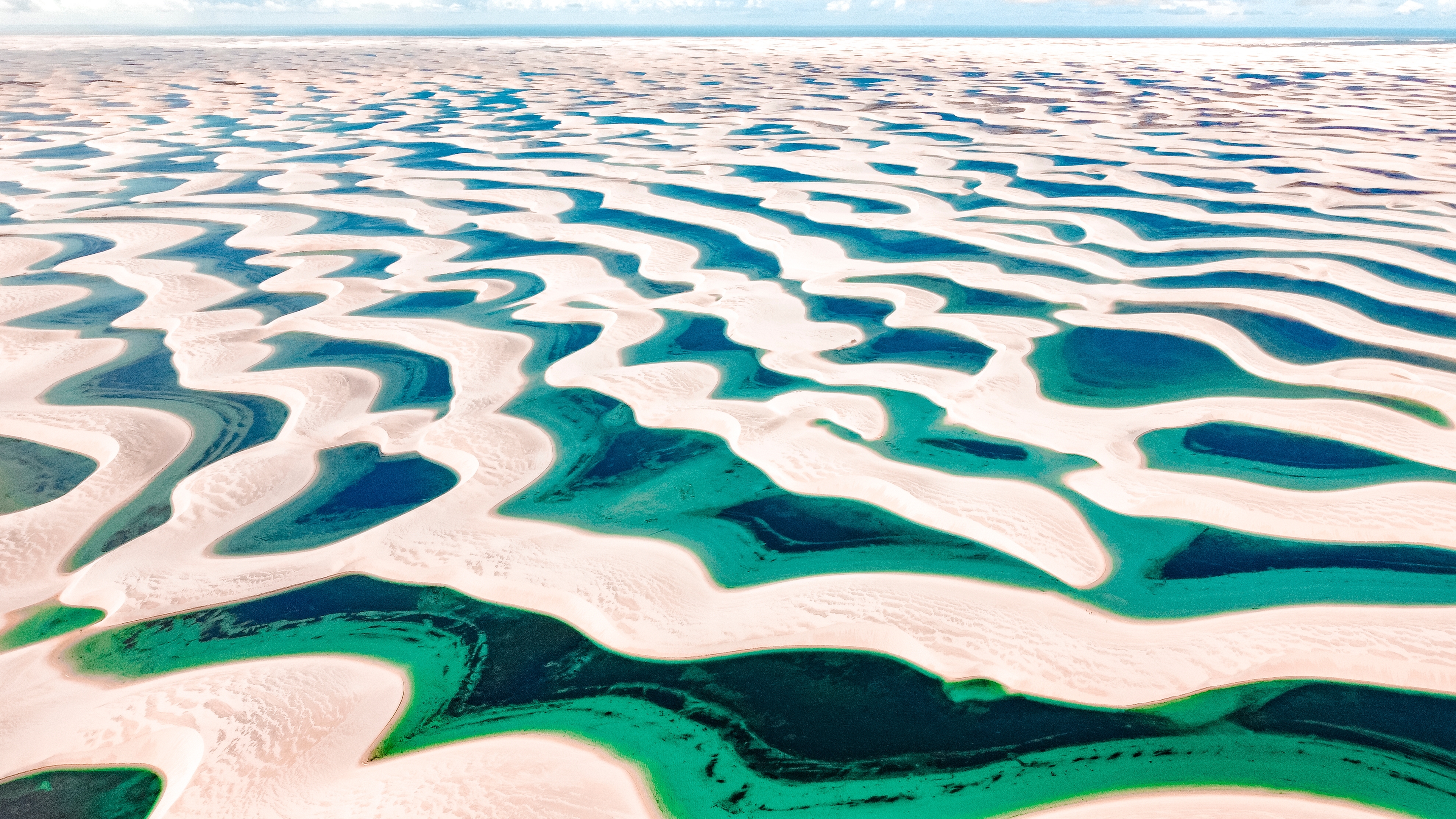 Wilson Santos Marques, Shutterstock
Wilson Santos Marques, Shutterstock
Victoria Falls, Zimbabwe and Zambia
It’s as if the Earth itself yawned wide and swallowed the mighty Zambezi River whole at Victoria Falls—and in a way, that’s exactly what unfolded, carving one of the most breathtaking natural spectacles on the planet.
Tulip Fields, Netherlands
The vibrant stripes of color that cut across the Tulip Fields of the Netherlands look impossible.
Mount Roraima, Venezuela, Brazil, and Guyana
Mount Roraima is pretty impressive, jutting suddenly out of the earth, but it's even better when the clouds come in and the entire mountain looks like it's floating in an ocean of white.
Vatnajokull Glacier Cave, Iceland
The rippling, bubbling patterns across the ice in Vatnajokull Glacier Cave look like they're not from planet earth.
Antelope Canyon, USA
It's a classic for a reason.
Fly Ranch Geyser in Northern Nevada, USA
Words barely capture the surreal magic of Fly Ranch Geyser—it’s something you truly have to witness in person. Luckily, the Burning Man Project, guardians of this extraordinary land, offer exclusive, limited tours that let you experience this wild spectacle up close. Consider yourself lucky.
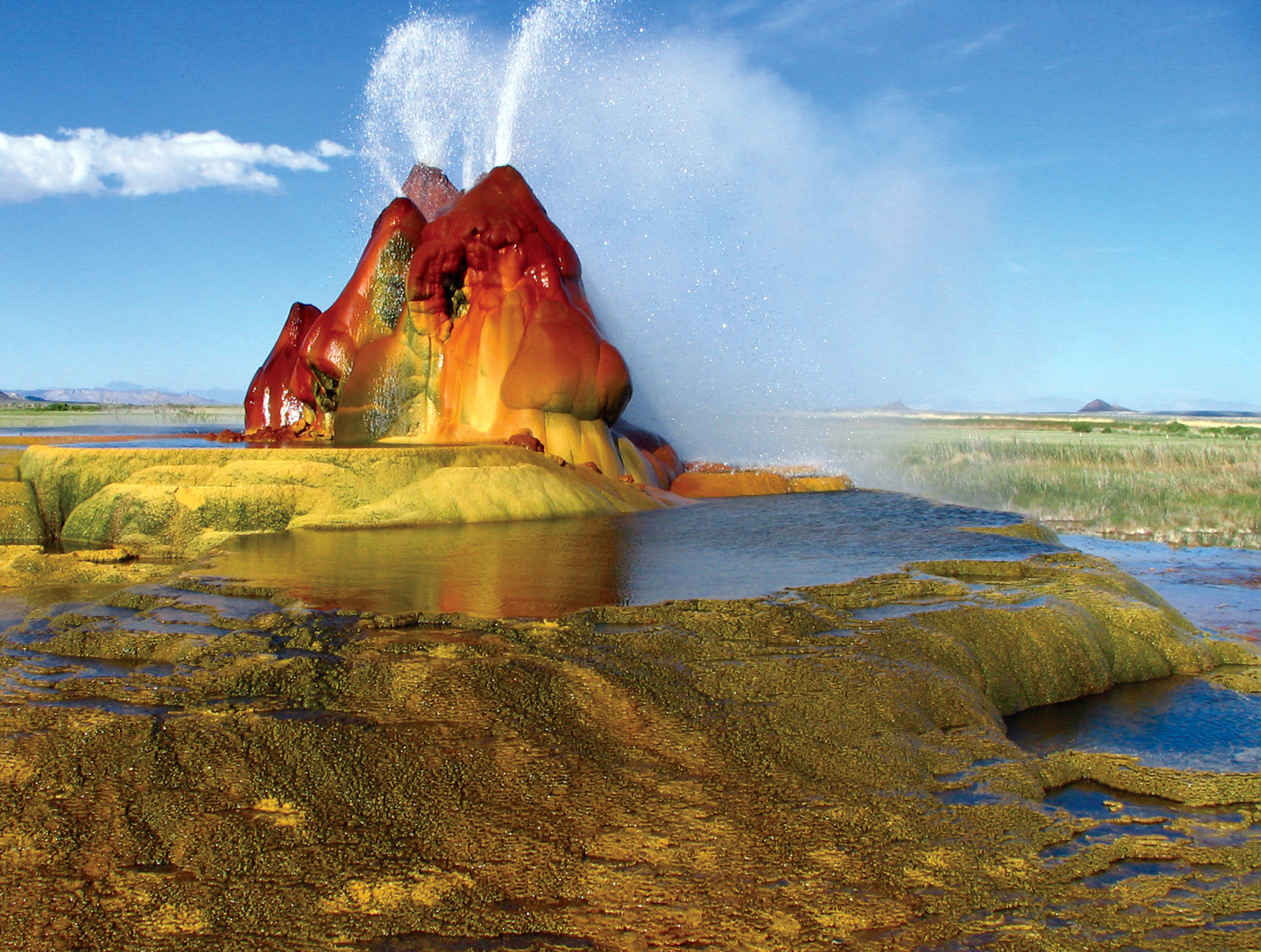 Jeremy C. Munns, Wikimedia Commons
Jeremy C. Munns, Wikimedia Commons
Vinicunca, aka "The Rainbow Mountain of Peru" or "Mountain of Seven Colors"
If you need me to explain why "The Rainbow Mountain of Peru" is worth seeing in person, I don't know what we're doing here.
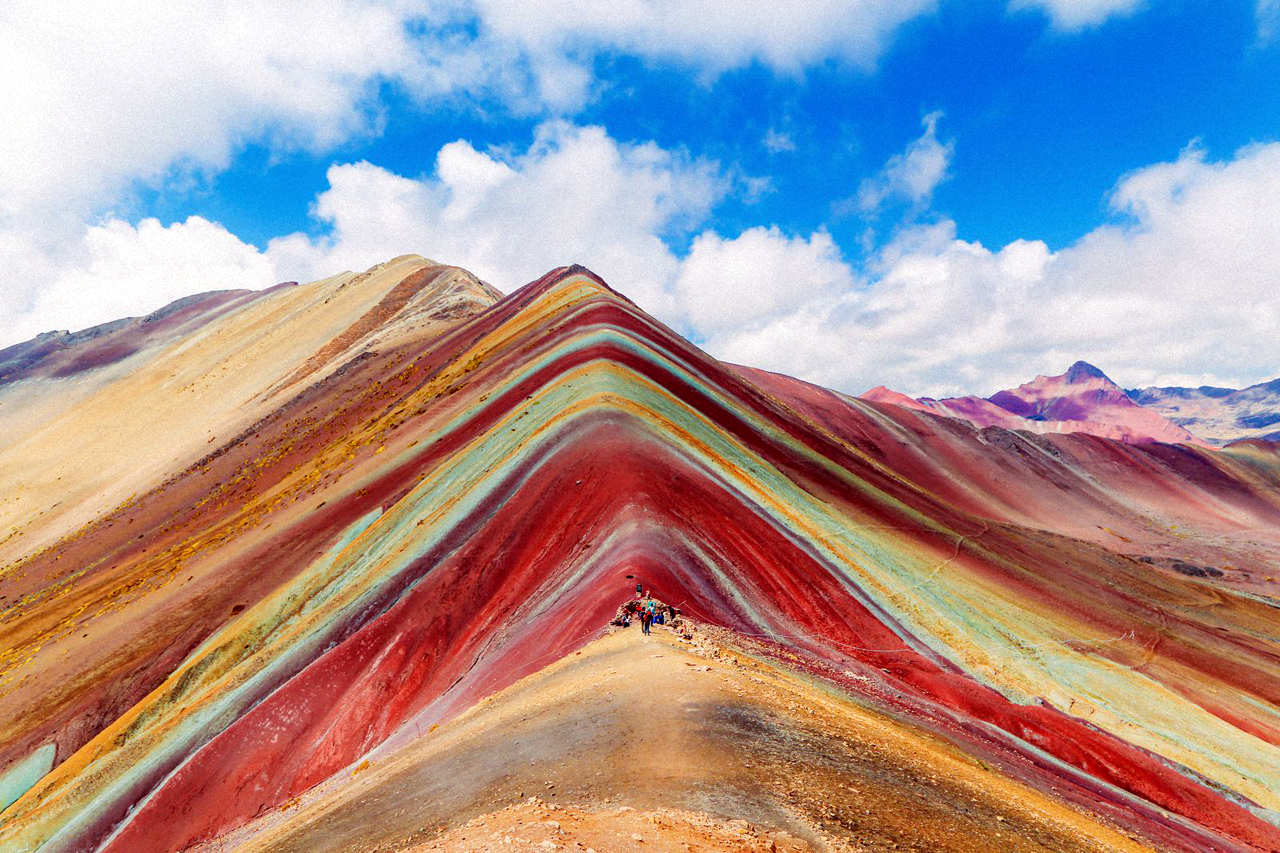 Michaellbrawn, CC BY-SA 4.0, Wikimedia Commons
Michaellbrawn, CC BY-SA 4.0, Wikimedia Commons
Lake Natron in The Great Rift Valley, Tanzania
Lake Natron in Tanzania's Great Rift Valley is the closest on Earth you can get to the red salty planet of Crait.
"The Sea of Stars" on Vaadhoo Island
In many Pacific Islands, the Maldives especially, the shoreline itself lights up on special nights. The Sea of Stars looks like something from an alien planet—but it's just regular Earth plankton.
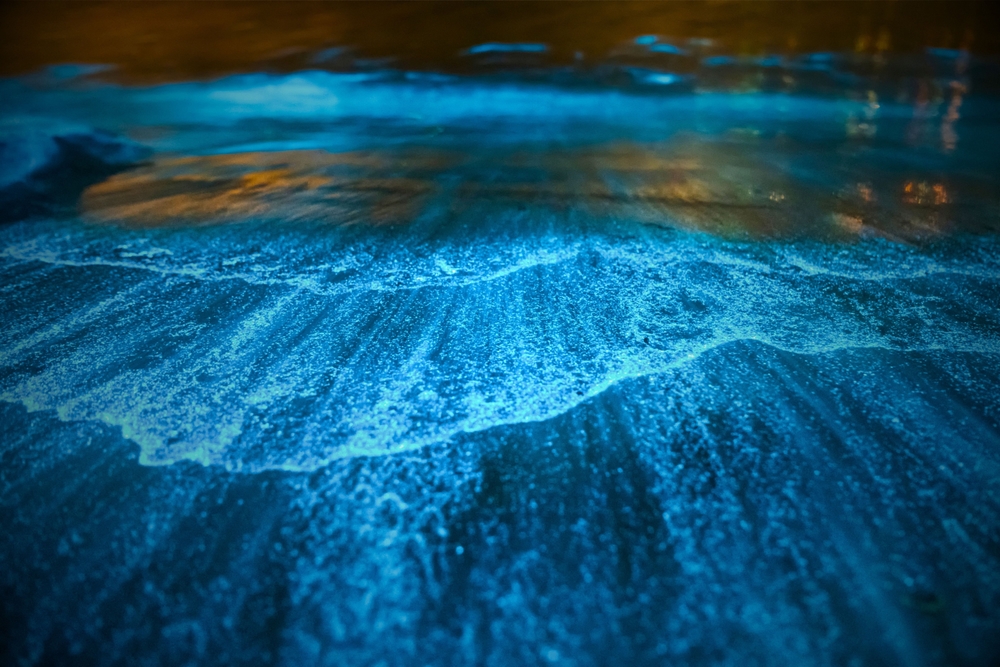 Tharuka Photographer, Shutterstock
Tharuka Photographer, Shutterstock
The Kawah Ijen Volcano in Java, Indonesia
When the sulfur gas escaping Kawah Ijen Volcano on Java catches fire, the entire mountain bursts into an eerie, mesmerizing blue blaze—a fiery phenomenon so rare and otherworldly, it feels like witnessing magic in motion.
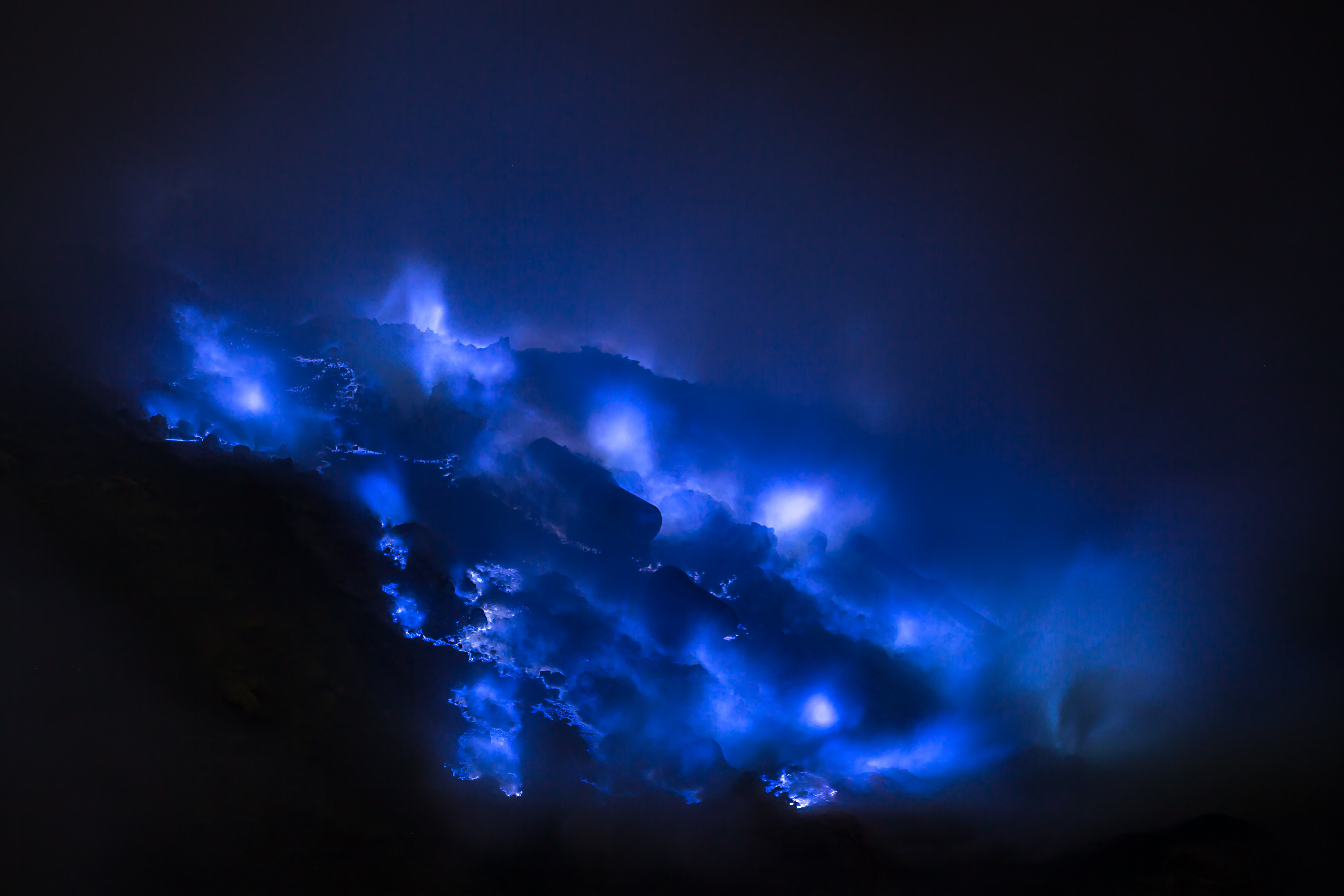
The Darvaza gas crater, aka "The Gates Of Hell," in Turkmenistan
It takes a lot for a place to earn a name like "The Gates of Hell," but the Darvaza gas crater in Turkmenistan, where the natural gas seeping out of the Earth has been burning since the 1980s, fits the bill.
The Giant's Causeway in Northern Ireland
It's hard to imagine what natural process might have created the uniform hexagonal pillars of the Giant's Causeway in Northern Ireland. So just trust me when I saw: There is a natural explanation for them, but it's very, very complicated. Just enjoy the view.
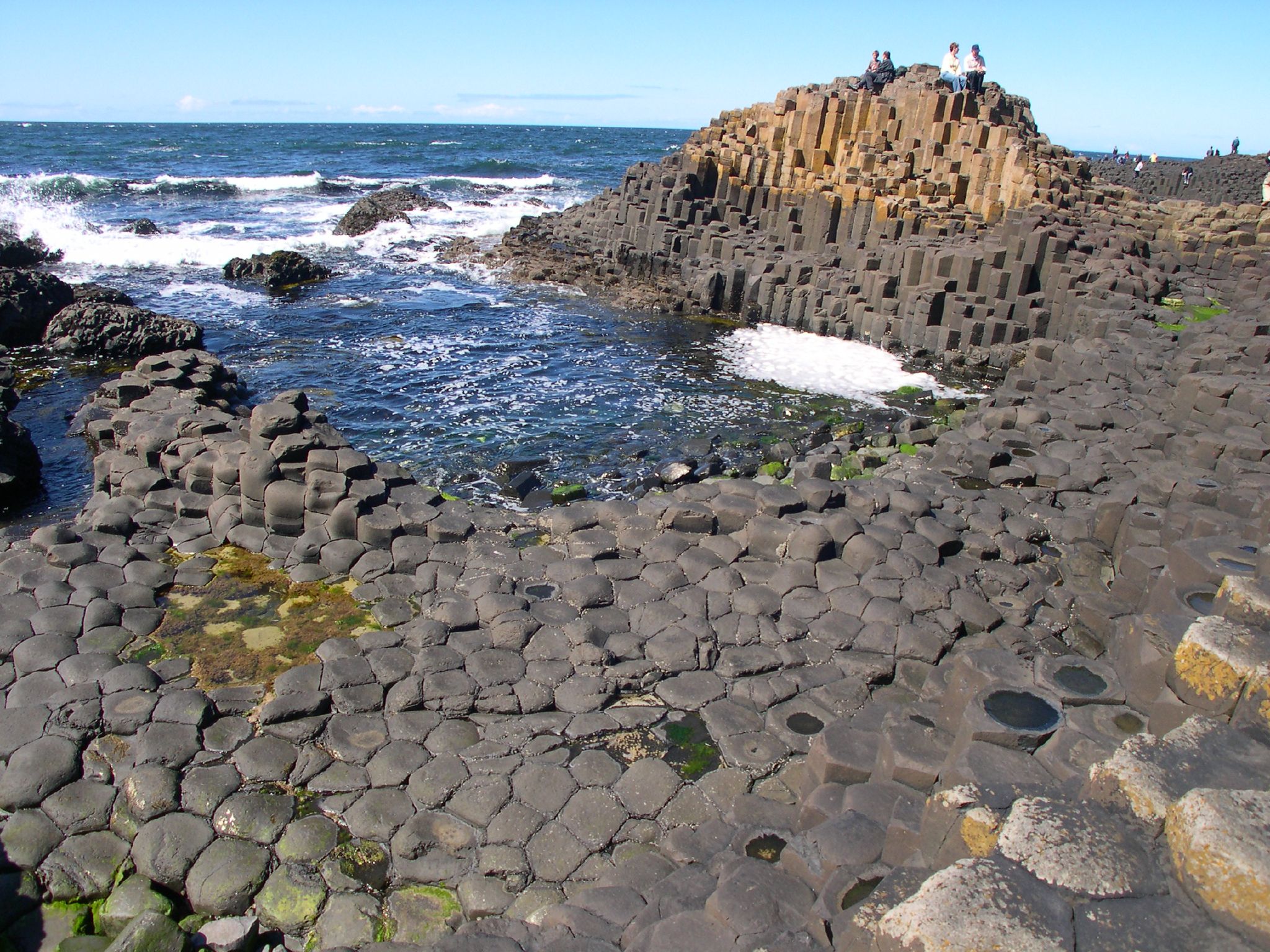 code poet, CC BY-SA 2.0, Wikimedia Commons
code poet, CC BY-SA 2.0, Wikimedia Commons
Spotted Lake in the Okanagan Valley, British Columbia
The different types of minerals in Spotted Lake in British Columbia's Okanagan Valley give each of the lake's spots their own unique color. Something about it is just unsettling though...
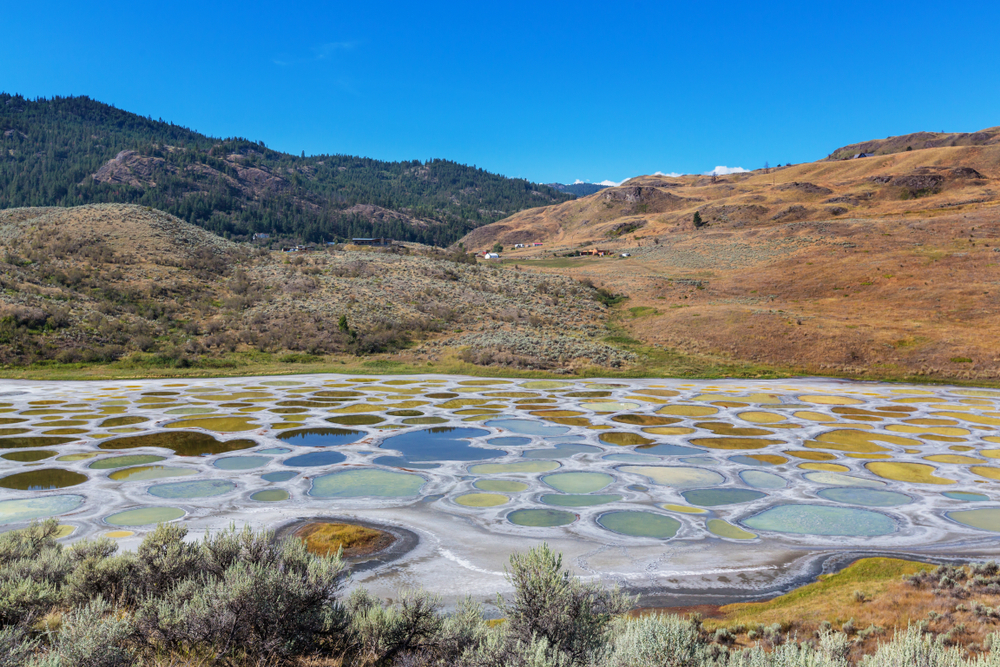 Galyna Andrushko, Shutterstock
Galyna Andrushko, Shutterstock
The Grand Prismatic Spring In Yellowstone Park
The Grand Prismatic Spring would be awe-inspiring simply for being the largest hot spring in the United States—but what truly stuns is its mind-bending rainbow of colors, melting from fiery red to vibrant orange, sunny yellow, lush green, and deep blue. It’s a psychedelic masterpiece so surreal, it almost feels like nature itself is painting a dream.
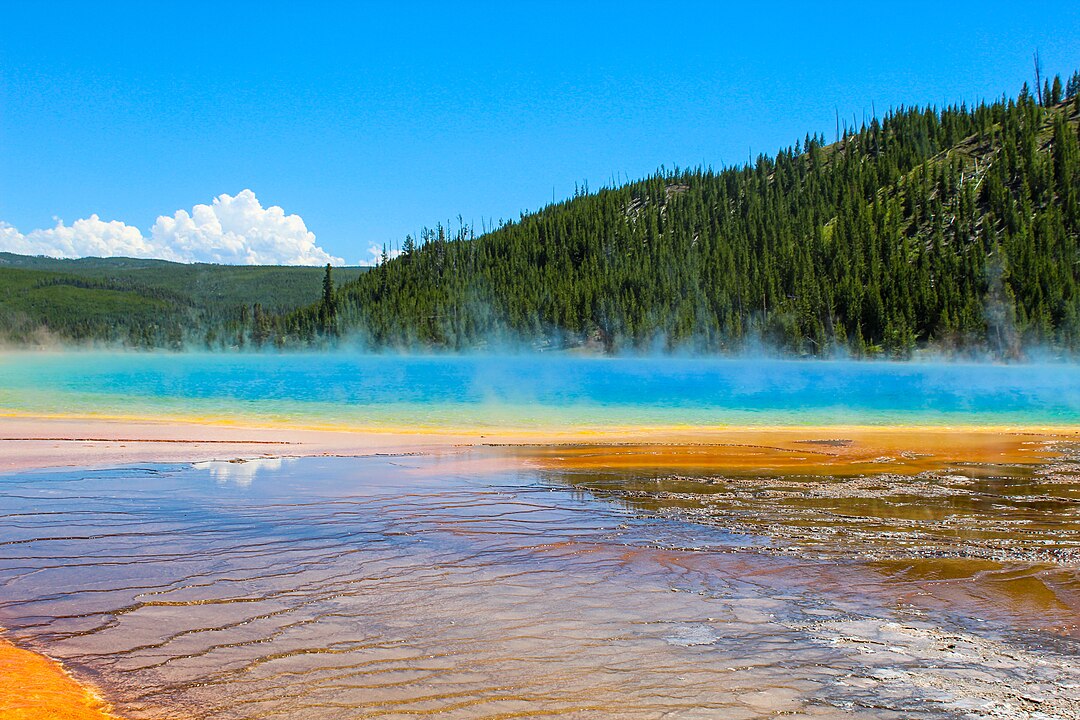 Vmm1234!, CC BY-SA 4.0, Wikimedia Commons
Vmm1234!, CC BY-SA 4.0, Wikimedia Commons
The Red Beach in Panjin, China
A specific kind of plant called Suaeda salsa, known for its red coloration, grows in abundance in Panjin, China. At the right time of year, it turns the entire landscape vibrant red.
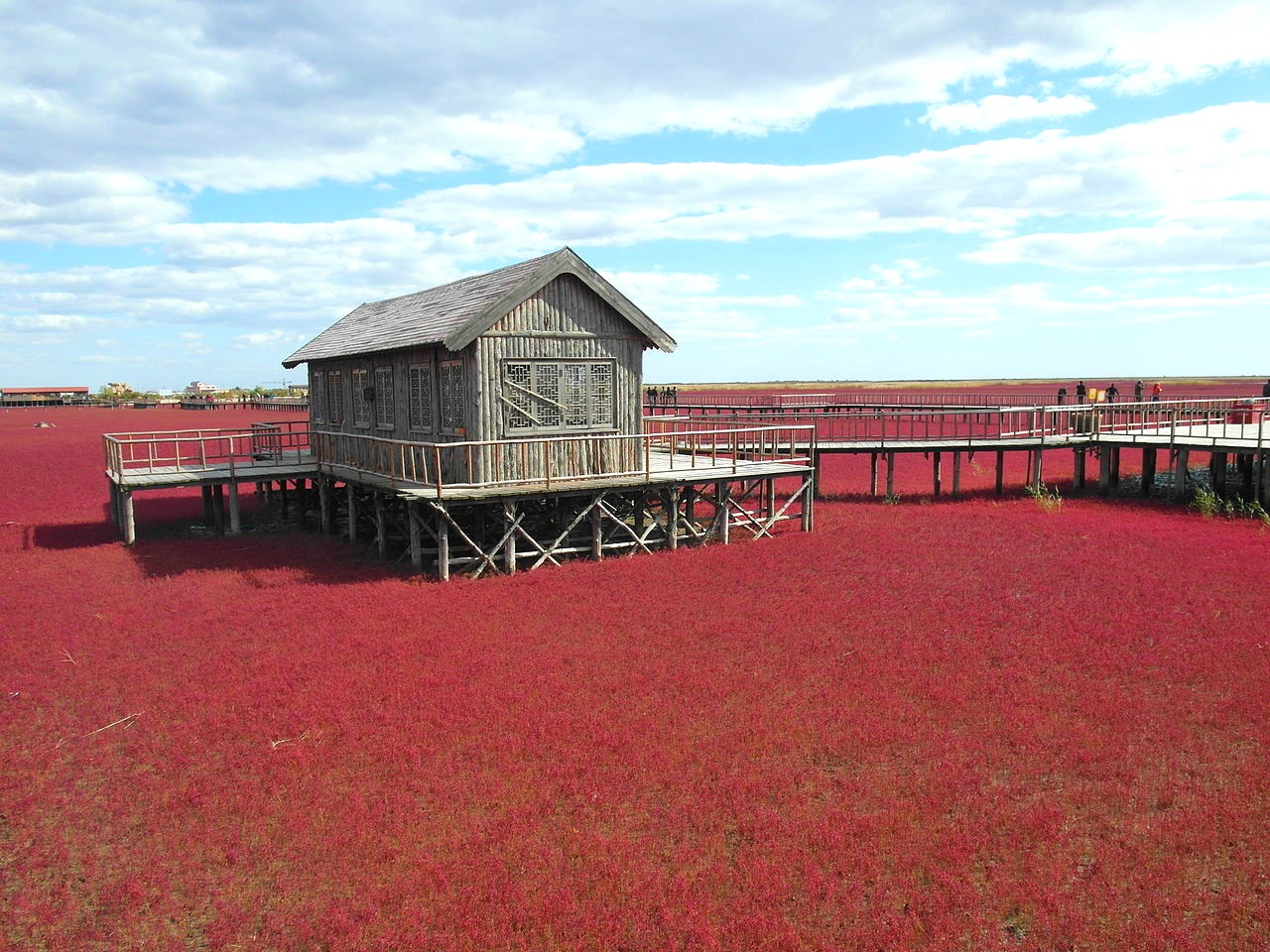 Wu Zhangfan, CC BY-SA 3.0, Wikimedia Commons
Wu Zhangfan, CC BY-SA 3.0, Wikimedia Commons
The Great Blue Hole, Belize
During the last Ice Age, Belize's Great Blue Hole would have been above land, so probably not quite so blue. Then the glaciers receded, the oceans rose, and the Great Hole got a lot bluer.
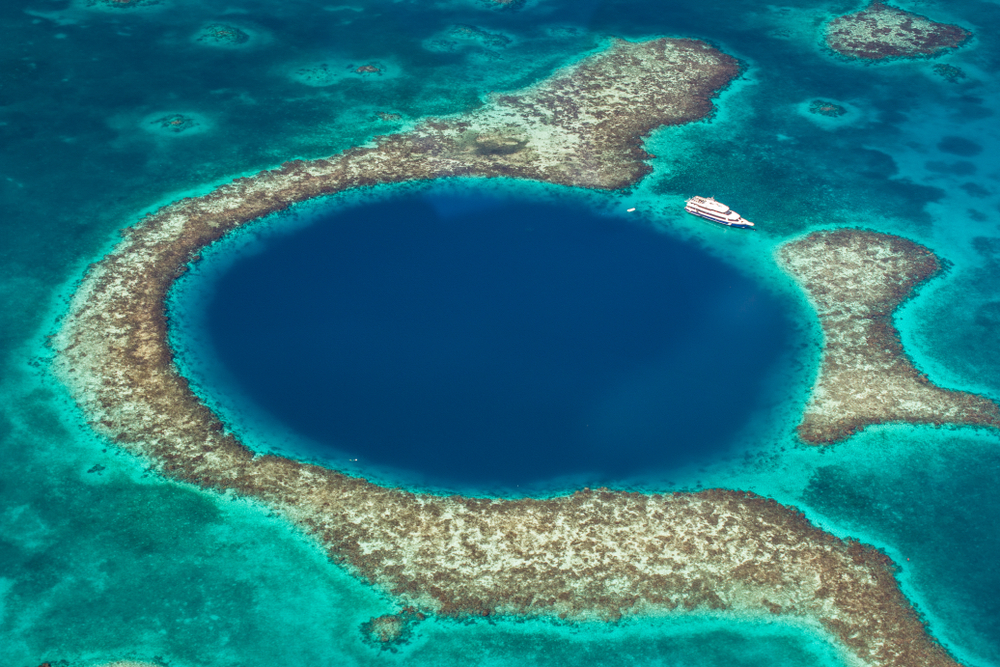 Globe Guide Media Inc, Shutterstock
Globe Guide Media Inc, Shutterstock
Cavernas de Mármol, or "The Marble Caves" in Chile
Cavernas de Mármol is a painting. The paint was limestone (as usual) and the painter was the waters of Chile's General Carrera Lake. It took 6,000 years but...I'd say it was worth it.
The Tunnel of Love - Klevan, Ukraine
In a cloak of secrecy, the Soviets once planted trees along the rail line near Klevan, Ukraine—a hidden green corridor shrouded in mystery. When the tracks were eventually abandoned, nature quietly took back its throne, weaving a lush, enchanting tunnel that travelers would later stumble upon and lovingly name “The Tunnel of Love.” Today, it’s a living fairytale, where every step feels like stepping into a dream.
 Myroslava Rakovets, CC BY-SA 3.0, Wikimedia Commons
Myroslava Rakovets, CC BY-SA 3.0, Wikimedia Commons

